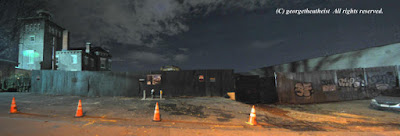THE CITY
The
night Jeffrey Wolford came in off the frigid sidewalk seeking warmth in
Manhattan’s 30th Street Men’s Shelter last winter, it was too late to
get a bed.
He
was assigned a plastic chair, alongside 20 other men already dozing in
the city’s biggest shelter, a major intake center for homeless people.
Just as he was nodding off, he looked down and saw a man rifling through his backpack, trying to steal his phone.
The
two were wrestling on the floor when a shelter supervisor intervened.
Wolford says he explained the attempted phone theft. But the supervisor
told the thief to take a seat — and ordered Wolford back out into the
cold.
Disgusted, he grabbed his belongings and ventured back out into the pre-dawn Arctic chill.
“Sleeping in the streets is preferable to that,” said Wolford, 33.
City
Hall’s last official count in January found more than 3,500 homeless
people on sidewalks or in the subways on a night when the temperature
plummeted to 28 degrees.
Last
week, Mayor Bill de Blasio announced plans to train 18,000 city workers
to call 311 when they see a homeless person to get more folks into city
shelters, which house about 60,000 New Yorkers.
“The
problem here is not (that) we don’t have a place to get someone that’s
safe and where we can get them mental health services and substance
misuse services, we have that,” he said. “It’s getting people to come
in.”
But
as winter approaches, homeless people living on the streets, in
interview after interview, told THE CITY they’d rather take their
chances on trains or sidewalks.
The myriad dangers facing them are underscored by a recent spate of killings of homeless people. That includes the Oct. 5 beating deaths
of four men sleeping on the streets of Chinatown — allegedly by a man
twice arrested for committing crimes inside city shelters.
On Nov. 5, a homeless man allegedly fatally stabbed another homeless man outside an East Elmhurst, Queens, shelter. Four days later, a similar killing took place inside an Upper West Side shelter.
Amid
this violent landscape, THE CITY zeroed in on the shelter where Wolford
says he was accosted and is often cited by homeless people as a place
to avoid: the 30th Street Men’s Shelter in Kips Bay.
Our
review of nearly 3,000 pages of internal records of dangerous and
criminal activity inside 30th Street in 2017 and 2018 found:
•
Serious incidents — such as assaults, death threats and possession of
significant quantities of drugs — won’t necessarily get someone arrested
or even kicked out.
• Violations of shelter rules often go without punishment.
•
Repeat offenders have no trouble bedding down for the night in a
shelter, even after multiple incidents in various city-run facilities.
That was the case with the man accused of the Chinatown killings.



/cdn.vox-cdn.com/uploads/chorus_image/image/62335350/millennial_turkey.1542295610.jpg)








































